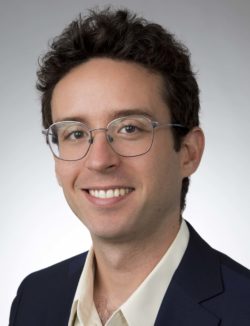From Ukraine to PFAS, Here’s What You Missed at the CPCU Society Reinsurance and Excess and Surplus Symposium

Members of the risk and insurance industry recently convened for the annual Reinsurance & Excess Surplus Lines Symposium held virtually on March 9-10. Sponsored by the CPCU Society’s Reinsurance & Excess Surplus Lines Interest Group, the virtual conference attracted 100 attendees over its two days.
The event has long been a favorite in the reinsurance community, but this year it was expanded to include professionals in the excess and surplus lines field.
Four panels over two days covered wide-ranging topics and emerging issues appealing to a broad range of reinsurance professionals. Each session encouraged participants to think about risk in different ways, with perspectives from senior leaders, reinsurers, risk managers, and specialists.
Expert Panels Cover Emerging Trends
With four expert panels spread over two days, the conference focus was on in-depth discussions and deep dives into trending topics and emerging issues. While the sessions were virtual, there were plenty of opportunities for interaction, networking, and Q&A among the panelists and participants.
There was even an opportunity for fun with a networking reception and piano bar hosted by Greg Offner, a musician, keynote speaker, and past insurance producer. Taking requests from the audience including Elton John, Britney Spears, and Neil Diamond, Greg and his partner skillfully entertained the virtual room and provided a space for networking and fun.
View from the Top
The symposium began with a “view from the top” discussion with industry leaders. The panel focused on challenges disrupting the industry. Global events like the war in Ukraine, supply chain issues, and the risk of a recession were all discussed.
The conversation then narrowed to a focused discussion around challenges with social inflation and nuclear verdicts. The panel discussed the rising costs of jury verdicts, with runaway verdicts costing twice as much as in the past in some jurisdictions. The session wrapped up with a conversation on growing cyber risks and new market opportunities including cannabis exposures.
Climate Change and Water Resilience
The climate change session featured perspectives from a meteorologist as well as reinsurance experts examining the impact of extreme weather conditions on rainfall, snowmelt, and more. All three panelists stressed the importance of resilience in their presentations.
Fred Parcells, CPCU, ARM, ARe, AVP corporate underwriting products, AmeriTrust Group, summarized the session, saying, “In today’s climate-change impacted world, having a water resilience strategy is essential. Ranging from hurricane-induced flooding to the worst megadrought in the Western U.S. in 1,200 years and everything in-between, businesses and individuals must be able to adapt accordingly to environmental conditions.”
Elaborating on his main point from the session, James Martin, head of client management & business development, Americas region, AXA XL, explained, “Companies need to understand their relationship with water and rethink their strategies to transform their business models in order to build a more water-secure world.”
“If they don’t, not only could they be affected themselves by lack of water quality or access for operations, but they could also be held accountable for the impacts they have to water systems and communities,” Martin said. “Ultimately, they may also miss key opportunities to progress in a world where resilience will be key.”
Dan Ward, Senior Meteorologist at Karen Clark, spoke about how models can help illustrate changes in weather patterns from climate change. “Atmospheric hazards like hurricanes and floods respond differently to climate change, meaning each has different implications for risk in our warming world,” Ward said.
“There is a real opportunity in this moment for catastrophe models to help the insurance/reinsurance industry understand how climate change has altered the risk from natural hazards already, and what the future holds,” he said.
For Ward, “filling this important role requires that catastrophe models incorporate the current scientific understanding of climate trends. This ensures that assessments of risk will include the changes in the atmosphere and oceans that have occurred to-date.”
Rising Stars and Emerging Talent
The second day of the symposium started with a session sponsored by Gamma Iota Sigma, the international fraternity for insurance, actuary, and risk management students. GIS has 97 chapters with over 5000 members.
With the talent gap and the Great Recession hitting the insurance and risk management industry particularly hard, the panel focused on the perspectives of recent graduates, young professionals, and current students and discussed ways to attract and retain talent.
Global opportunities, networking, diversity, and meaningful access to senior leaders were among the reasons the panelists were attracted to their current employers.
Per- and Polyfluoroalkyl (PFAS) Substances Panel
The symposium concluded with a deep-dive discussion into per- and polyfluoroalkyl substances, or PFAS. The panel helped to define PFAS and talked about the potential risks to human health. Current and future litigation and coverage issues were also raised.
Lucian McMahon, CPCU, senior manager, casualty analytics, extreme event solutions at Verisk, commented on the emerging nature of PFAS issues, saying, “Litigation has already resulted in billions of dollars in awards and settlements in the U.S., and appears to only be spreading.”
“Because of their ubiquity, PFAS liability exposures can touch many commercial insureds — and insurers will need to understand how this risk may accumulate across their portfolios and will need to think holistically about managing their exposure,” McMahon said.
The panel highlighted the importance of focusing on PFAS as an emerging trend. Insurers and risk managers need to manage questions about exposure, coverage, and litigation. And with the prevalence of PFAS in our environment, the risk is here to stay.
Join Us for the Next Reinsurance & Excess Surplus Lines Symposium
Kelli Kukulka, SVP, treaty underwriter at RenaissanceRe U.S. and chair of the Reinsurance and Excess Surplus Lines Interest Group summarized the event by saying, “Another CPCU Society RE&S Symposium done.”
“Now we can relax and reflect upon the past, how wonderful it will be to get together in person again, and the emerging exposures that we’ve talked about over the last few years — cyber, 3-D printing, concussions, cannabis, vaping, and now PFAs,” Kukulka said.
“In spite of those emerging risks, I walked away from the symposium this year energized with the thought of ‘how do I get the word out’ to more people about our industry and what an interesting and rewarding career in reinsurance or excess & surplus lines can be,” she added.
CPCUs who attended the full symposium earned seven CE hours toward their ongoing education requirements. But the symposium is open to anyone — CPCU membership is not required to attend.
Watch for news about next year’s Reinsurance & Excess Surplus Lines Symposium. Whether back in person or held virtually, there is sure to be great educational content to explore. &











